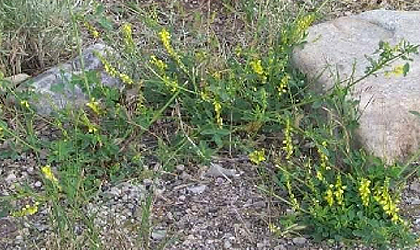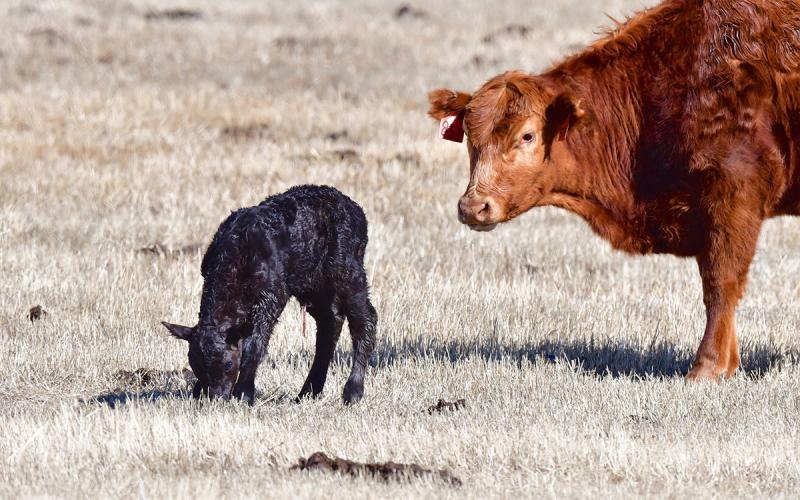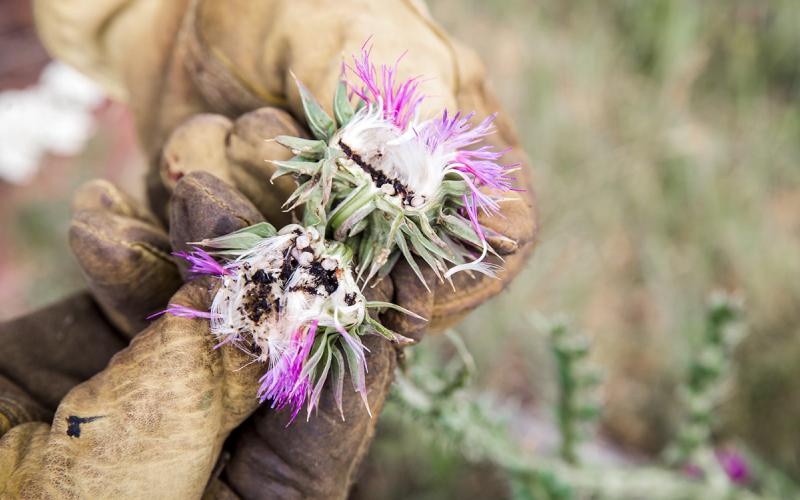Written by Ken Olson, former Professor & SDSU Extension Beef Specialist.
About Sweet Clover

There have been ideal growing conditions over the last two years for yellow sweet clover throughout western South Dakota and beyond. Not only is sweet clover forage production abundant, it can be very nutritious if managed properly. It is a legume, so like alfalfa and other clovers, it is high in protein. Additionally, unless it is allowed to get tall with heavy stems, it can be highly digestible and thus a good source of energy. However, potential for sweet clover poisoning is a problem that may need to be dealt with.
Poisoning Concerns
The major concern about sweet clover poisoning is when putting up hay. The problem is when sweet clover hay is put up too wet and it molds in the bale. Sweet clover contains a substance called coumarin, which is converted to dicoumarol by mold in hay. Dicoumarol is an anti-clotting agent that will cause livestock to hemorrhage (bleed). This can be internal bleeding so there are no apparent signs of the problem looking at the cattle. One sign to look for is black, tarry manure caused by internal bleeding into the intestinal tract. Severe levels of poisoning can lead to abortion in pregnant livestock and ultimately death. The conversion of coumarin to dicoumarol can occur even if there is only a little mold in the hay, so mold level is not a good indicator of the dicoumarol level. Baling into large, dense bales can make the problem worse because mold formation in damp hay will be worst at the core of a large bale. The best prevention of poisoning is to be sure the hay is cured well before baling. This is a problem with a productive stand of sweet clover because it forms heavy, strong stems that are difficult to dry adequately. One option is to cut it at a relatively immature state before thick stems are formed. However, once it is in full bloom, the stand is already past that stage of maturity, so extended drying time may be needed. Harvesting at a less mature stage will also lead to higher hay quality.
Bailing Considerations
A problem for many producers this year is that frequent (nearly daily) rains have made it difficult to cure hay adequately for baling. Additionally, frequent rain has caused many producers to delay harvest waiting for a break in the wet weather, which has lead to excess maturity of the sweet clover forage. Thus, drying it for hay becomes increasingly challenging. Making bale silage (baleage) rather than hay may be an option in a wet year like this. In brief, to make baleage, windrowed forage is baled at 50 to 55% moisture content and then immediately wrapped in plastic or placed in silage bags. As long as the plastic covering is air tight, the forage is preserved with essentially no mold growth. Once the bag is opened in the winter, the cold temperatures should limit mold growth while the bales are being fed. Baleage may be a great option for conserving forage when haymaking is difficult.
Forage Testing
If mold is suspected in either hay or baleage once they are put up, an important next step is to determine how much dicoumarol is present. The North Dakota State University Veterinary Diagnostic Laboratory provides a test of forage for dicoumarol level. Contact your veterinarian to submit samples of suspect hay. Once the level is known, then management options can be considered. One option for feeds with low dicoumarol levels is to blend them with feeds that do not have dicoumarol to dilute the feed mixture to a safe level. Another is to switch every other week between the sweet clover hay and another hay without sweet clover. While these approaches lessen the severity of the poisoning, caution is still needed, including close observation for symptoms of poisoning. It will also be important to not feed hay that contains dicoumarol to cows that are near calving or during calving. In the same light, also do not feed dicoumarol-containing hay to calves or other classes of livestock that will undergo surgical procedures, such as castrating or dehorning.
The Bottom Line
Sweet clover is an opportunistic plant that is going to be abundant in pastures and hay fields when the growing conditions are favorable. Although it can cause problems as described, it can be a source of nutritious winter feed if managed properly to control the problems. The bottom line is that hay that contains sweet clover can be an excellent feed as long as the dicoumarol level is known and feeding management is used to prevent poisoning.
Written with contributions by Adele Harty, former SDSU Extension Cow/Calf Field Specialist.


